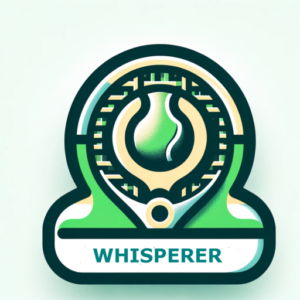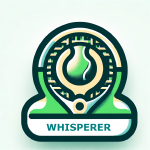How Screens Can Sabotage Your Tennis Game
How Screens Can Sabotage Your Tennis Game
In today’s game, winning points isn’t just about fast feet or a powerful forehand—it’s about how well your eyes can keep up. Your visual system is constantly working overtime: tracking a ball moving at high speed, judging spin and depth in a split second, and syncing your movement to what you see.
But here’s the catch—if your eyes are fatigued or out of sync, your timing, balance, and anticipation can crumble. And in the age of constant phone scrolling and computer work, many players are stepping on court with eyes that are already running on empty.
Your Visual System’s Job on Court
It’s doing far more than just “seeing the ball.” It’s:
Tracking rapid movement
Across the net, baseline to baseline, in a fraction of a second.
Judging depth and spin in milliseconds
So you can position and time your shot perfectly.
Coordinating body movement with visual input
To maintain balance and hit in rhythm.
When the visual system is fatigued or unstable—often thanks to too much screen time—your reactions slow, your court positioning suffers, and your balance wobbles under pressure.
From Office Screens to On-Court Struggles
Take “Lira” (name changed), a 35-year-old competitive rec player. She spends hours online for work and hobbies. Over time, she noticed:
Dizziness
While tracking balls from the periphery.
Eye fatigue
After just a set or two.
Anxiety in busy visual environments
Such as crowded courts or doubles play.
Difficulty locking focus
On her opponent’s racquet or contact point.
Her problem? A combination of Convergence Insufficiency (trouble bringing the eyes together for near focus) and Vertical Heterophoria (a subtle vertical misalignment of the eyes). Each condition alone can throw you off—but together, they were wrecking her performance.
How Visual Fatigue Hurts Your Tennis
Late reactions on returns
The split-second delay in visual processing can mean a shanked return or being late on a passing shot.
Poor anticipation
You miss subtle cues in your opponent’s body language.
Balance breakdowns
You feel off-kilter when changing direction, especially on wide balls.
Reduced stamina
Your brain burns more energy processing unstable visual input, draining you faster.
Why Screens Make It Worse
A major clue in Lira’s case: her symptoms were triggered by visual activity—screens, faces, busy traffic—not simply physical exertion.
That’s a key lesson for players: if dizziness or fatigue only happens with visual demand, your eyes might be the real culprit.
The Tennis Takeaway
If you’re a player who:
-
Feels “foggy” late in matches
-
Struggles with balance on wide or low balls
-
Has trouble locking onto the ball in fast rallies
-
Gets anxious or disoriented in doubles traffic
…it might not be your strokes—it might be your visual stamina.
The bad news? Endless scrolling, streaming, and screen work off-court can slowly erode that stamina.
The good news? With the right training, your eyes can be retrained—just like your footwork or serve mechanics.
Bottom line: Your eyes are as much a part of your tennis toolkit as your legs and racquet arm. Protect them off court, train them on court, and you’ll feel sharper, steadier, and more confident in the big points.
Phone-to-Court Visual Reset (3 Minutes)
Goal: Loosen near-focus tension from screen use, activate tracking speed, and sharpen depth perception before warm-up hits.
1. Distance Reset – “20–20–20” Style (1 min)
Purpose: Relax eye muscles and shift from near to far focus.
-
Look at the furthest object you can see (tree, scoreboard, light post).
-
Hold your focus there for 20 seconds, blink naturally.
-
Shift to another distant object for 20 seconds.
-
Repeat once more.
2. Saccade Speed Boost (45 sec)
Purpose: Activate rapid eye movement for reading the ball early.
-
Pick two objects about 3–5 meters apart in your vision (court sign, umpire chair).
-
Without moving your head, snap your eyes from one target to the other as fast as possible.
-
Go for 15 seconds, rest 5 seconds, repeat twice.
3. Near–Far Snap Drill (45 sec)
Purpose: Improve quick focus changes between opponent’s racquet and ball.
-
Hold a tennis ball with a large letter/number written on it at arm’s length.
-
Focus on it for 2 seconds, then quickly shift to the net strap or far baseline.
-
Repeat 15–20 times.
4. Convergence Tune-Up (30 sec)
Purpose: Strengthen eye teaming for better ball tracking.
-
Hold your racquet in front of you, tip pointing up.
-
Slowly bring the tip toward your nose, keeping it single and clear as long as possible.
-
Return to start, repeat 5–6 times.
Whisperer Tip: Do this before your physical warm-up (short court rallies, mini tennis) and your eyes will already be in game mode—no “foggy first two games” effect.




